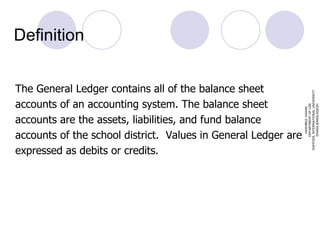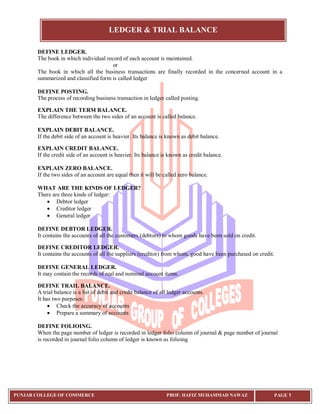Led by editor-in-chief, Kimberly Zhang, our editorial workers works exhausting to make each bit of content material is to the highest requirements. Our rigorous editorial course of includes enhancing for accuracy, recency, and readability. This report reveals the whole belongings, liabilities, and all your accounting gadgets organized based on the debit and credit duality. You have management by way of search settings to evaluation the account you wish to see in the common ledger.
Number Of Accounts
While a trial balance is an important step within the accounting cycle, it shouldn’t be considered a foolproof technique for detecting all errors. Additional inside controls and reconciliation procedures are important to make sure the accuracy and integrity of economic data. When it comes to managing monetary data, companies depend on numerous instruments and techniques to make sure accuracy and transparency.
Transposition And Slide Errors
Think About steering a ship with out often checking your compass—a risky endeavor, right? In business financial management, the trial steadiness is a vital checkpoint, making certain your financial course is correct and reliable. This cornerstone of accounting verifies the integrity of your common ledger and lays the groundwork for making ready important monetary statements.
In a double-entry accounting system, every Debit is at all times matched by the identical quantity of Credit. If the trial balance doesn’t balance, it indicates an error in the common ledger. Common errors include transposition errors, incorrect posting of quantities, or omissions. It’s essential to analyze and correct these errors before getting ready monetary statements.
Possibly your income account is wanting nice however your expense account just isn’t displaying plenty of motion. Your trial balance indicates where you may have some wiggle room and gives you an concept of how your budget might look. Belongings, liabilities, fairness, income, and bills are the most typical classes for these accounts. Each account has its own steadiness that should be calculated individually first.
- It lists the ending steadiness of each account within the general ledger, separated into debit and credit score columns.
- Perhaps your income account is looking great but your expense account isn’t displaying lots of movement.
- The steadiness sheet reviews a company’s financial standing at the finish of a specified period, such as on the end of a quarter or fiscal year.
- It captures each transaction, providing a whole and detailed image of a company’s monetary well being.
The Trial Balance compares the total debits and credits in the General Ledger to confirm if they’re equal, which is a elementary precept of double-entry bookkeeping. The trial stability is a summary report generated at a specific point in time, usually at the end of an accounting period. It lists the ending stability of every account in the basic ledger, separated into debit and credit score columns. The main function of the trial stability is to confirm the mathematical accuracy of the general ledger by ensuring the whole debits equal the whole credit.
This step organises transactions into particular accounts corresponding to money, accounts payable, or income. At period end, asset, expense, or loss accounts ought to have debit balances; liability, equity, income, or gain accounts should have credit balances. Nevertheless, some accounts may be credited or debited in the course of the interval, reducing their ending balances. On a trial steadiness worksheet, all the debit balances kind the left column, and all of the credit score balances kind the best column, with the account titles positioned to the far left of the two columns.
It summarizes the balances of all accounts, together with assets, liabilities, equity, revenue, and bills. This attribute permits businesses to assess their monetary health and make informed selections based on the present state of their funds. If the trial steadiness doesn’t balance (i.e., if whole debits do not equal total credits), the next step is to identify and correct the inaccuracies. Common errors may embody transposed numbers, missing entries, or misclassified transactions.
An example of a ledger is a company’s general ledger, which accommodates all of its asset, liability, proprietor equity, revenue, expense, gain, and loss accounts. Every account incorporates the transaction amounts that pertain to the account title. These sorts of errors embrace posting an inaccurate quantity within the ledger, making an entry in the incorrect column, or performing a mistake while general ledger vs trial balance transferring ledger balances to trial balance columns. Assigning a transaction to the wrong account might lead to an inaccurate balance and an unbalanced trial stability. As an example, suppose you wish to post a income transaction to an expense account. To prepare a trial steadiness, you have to prepare a listing of all basic ledger accounts.
Then we translate these improve or lower results into debits and credit. The basic ledger holds data about every transaction, such as date, accounts, and amounts https://www.quickbooks-payroll.org/. The trial stability double-checks the ledger by summarizing account balances, and making sure the debits match the credits. Understanding the variations between the Basic Ledger and Trial Stability is vital for efficient monetary management in any business. Both tools play pivotal roles in ensuring the accuracy, reliability, and transparency of monetary information, thereby supporting knowledgeable decision-making and strategic planning. By diligently maintaining and reviewing these records, businesses can gain priceless perception into their monetary health and sustain long-term success.
Basic ledgers and common journals are essential monetary instruments for any business. Paystand is on a mission to create a extra open financial system,beginning with B2B payments. Utilizing blockchain and cloud expertise, wepioneered Payments-as-a-Service to digitize and automate your whole cashlifecycle. Our software program makes it possible to digitize receivables,automate processing, cut back time-to-cash, remove transaction charges, and enable new income. The data within the supply document serves as the premise for making ready a journal entry.



